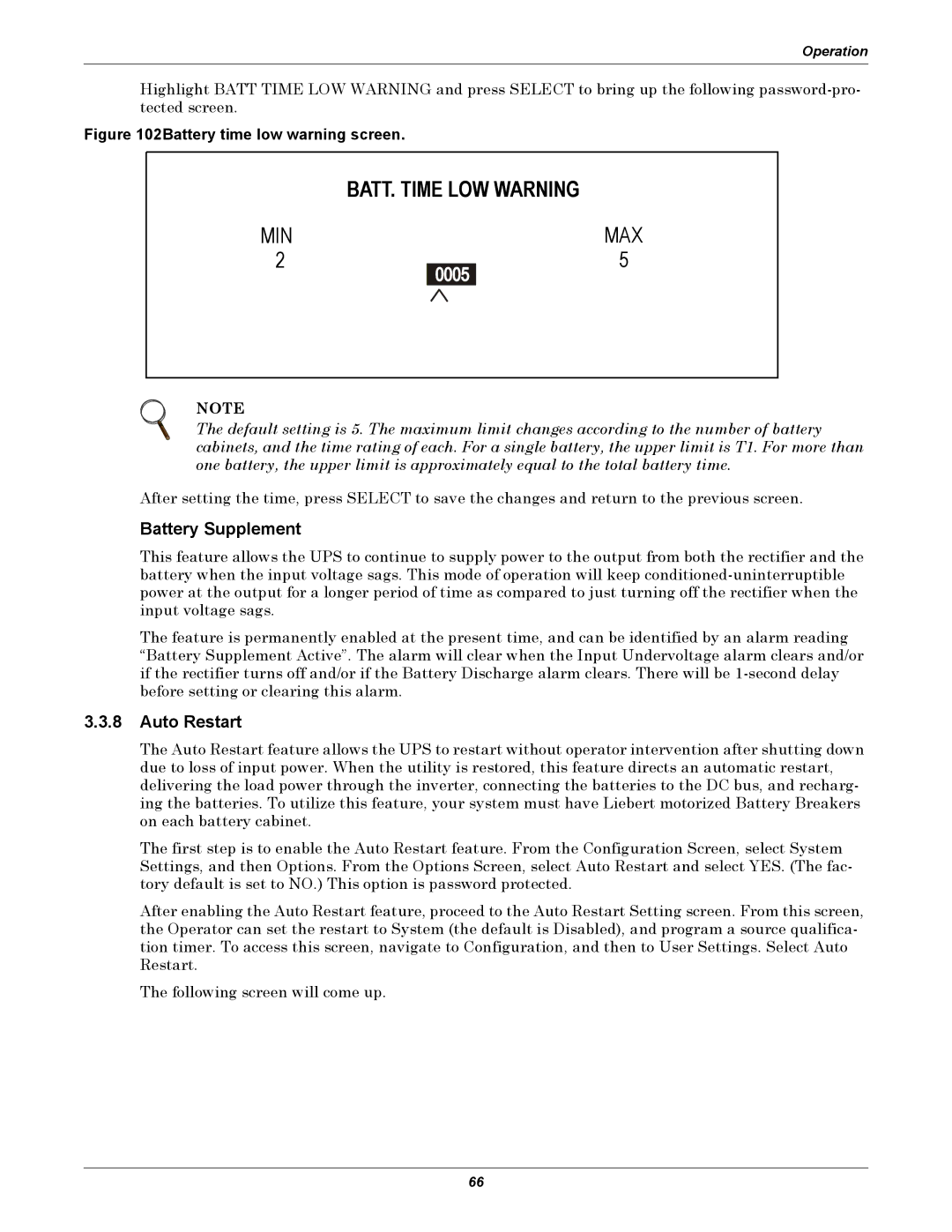
Operation
Highlight BATT TIME LOW WARNING and press SELECT to bring up the following
Figure 102Battery time low warning screen.
BATT. TIME LOW WARNING
MIN 2
MAX 5
NOTE
The default setting is 5. The maximum limit changes according to the number of battery cabinets, and the time rating of each. For a single battery, the upper limit is T1. For more than one battery, the upper limit is approximately equal to the total battery time.
After setting the time, press SELECT to save the changes and return to the previous screen.
Battery Supplement
This feature allows the UPS to continue to supply power to the output from both the rectifier and the battery when the input voltage sags. This mode of operation will keep
The feature is permanently enabled at the present time, and can be identified by an alarm reading “Battery Supplement Active”. The alarm will clear when the Input Undervoltage alarm clears and/or if the rectifier turns off and/or if the Battery Discharge alarm clears. There will be
3.3.8Auto Restart
The Auto Restart feature allows the UPS to restart without operator intervention after shutting down due to loss of input power. When the utility is restored, this feature directs an automatic restart, delivering the load power through the inverter, connecting the batteries to the DC bus, and recharg- ing the batteries. To utilize this feature, your system must have Liebert motorized Battery Breakers on each battery cabinet.
The first step is to enable the Auto Restart feature. From the Configuration Screen, select System Settings, and then Options. From the Options Screen, select Auto Restart and select YES. (The fac- tory default is set to NO.) This option is password protected.
After enabling the Auto Restart feature, proceed to the Auto Restart Setting screen. From this screen, the Operator can set the restart to System (the default is Disabled), and program a source qualifica- tion timer. To access this screen, navigate to Configuration, and then to User Settings. Select Auto Restart.
The following screen will come up.
66
